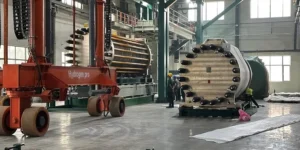Massive 600MW blue hydrogen plant secures UK planning permission

Equinor’s H2H Saltend has become the second major blue hydrogen project — and the first linked to the East Coast Cluster carbon capture and storage (CCS) network — to secure planning permission from UK authorities, taking the scheme a step closer to a final investment decision (FID).
Located in the Saltend Chemicals Park in Hull, the 600MW project will replace an existing steam methane reforming unit (which produces grey hydrogen from fossil gas) with a high-efficiency autothermal methane reformer (ATR) and CCS technology that Equinor claims will capture “at least” 95% of CO2 emissions.
The hydrogen produced at Saltend will be used to meet both existing and new demand within the industrial park and nearby area, with many processes that currently run on gas switched to run on H2 instead. This includes a plan to blend hydrogen into the gas-fired Triton Power Station, owned by Equinor and utility SSE Thermal, located within the chemicals plant.
The East Coast Cluster, of which H2H Saltend is just one project, aims to store CO2 from power plants which directly feed in their emissions, including Keadby 3 Carbon Capture Power Station, owned by Equinor and SSE, and Drax’s biomass-fired plant.
The decision on H2H Saltend comes a month after a 1GW project at Stanlow refinery, linked to the HyNet cluster, became the first to secure planning consent. Construction work on the Stanlow refinery is expected start this year.
The full 600MW of H2H Saltend has been granted planning permission, while the HyNet project is set to be built in two phases: with the first 350MW phase given full planning consent by local authorities, and the second 750MW preliminary consent.
Article continues below the advert
Given H2H Saltend alone is expected to produce an average of 430 tonnes per day, this could mean that both blue hydrogen projects in the UK are bigger than the largest to have reached a FID in Europe so far, Air Products’ 300-tonnes-a-day plant in Rotterdam.
While the EU has strictly focused on green hydrogen produced from renewables-powered electrolysis in its policymaking so far, the UK has from its first strategy focused on also backing blue H2 in its 5GW target for 2030, since doubled to 10GW.
Both the East Coast Cluster and HyNet CCS networks have been granted Track-1 status by the government, meaning they will be the first in line for licensing as well as subsidies from a £1bn ($1.26bn) fund with the expectation that the two clusters will be up and running in the mid-2020s.
Equinor confirmed to Hydrogen Insight that FID on H2H Saltend will be taken in 2026, subject to further government decisions on the CCS clusters.





